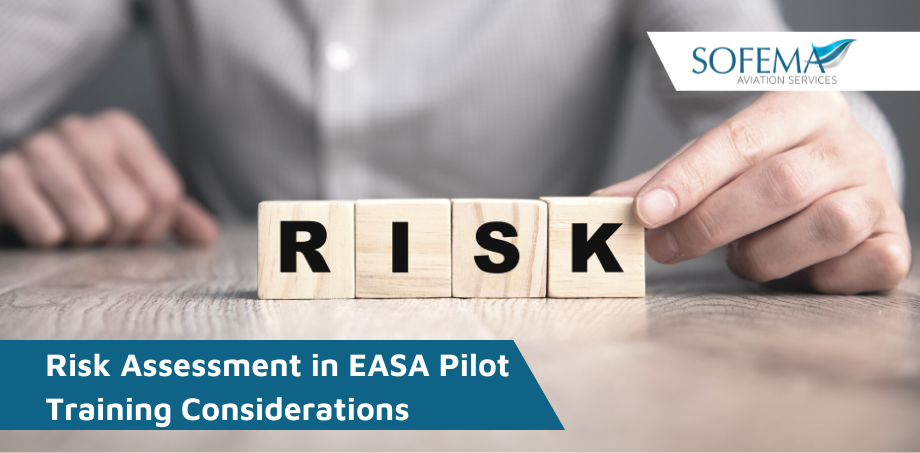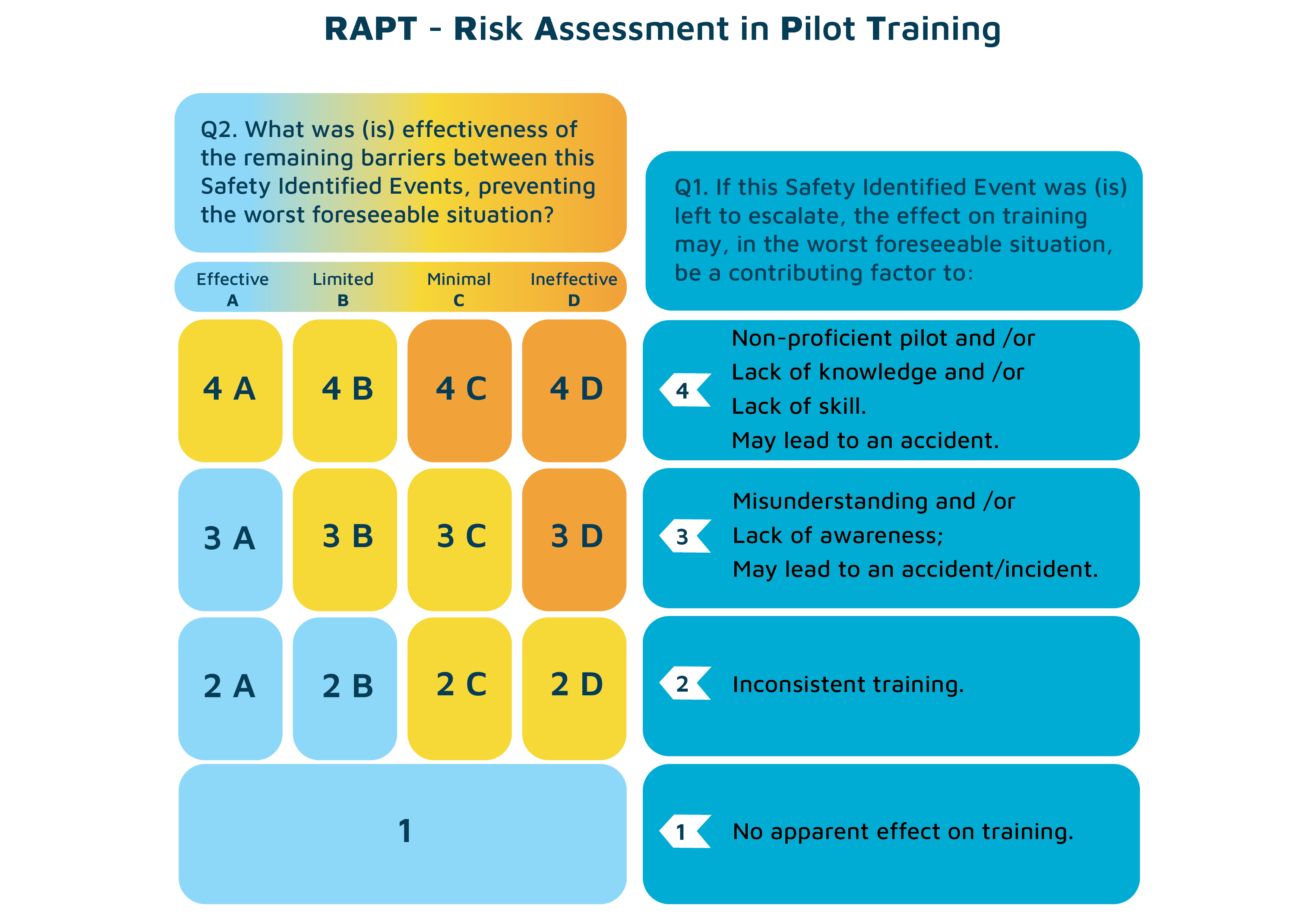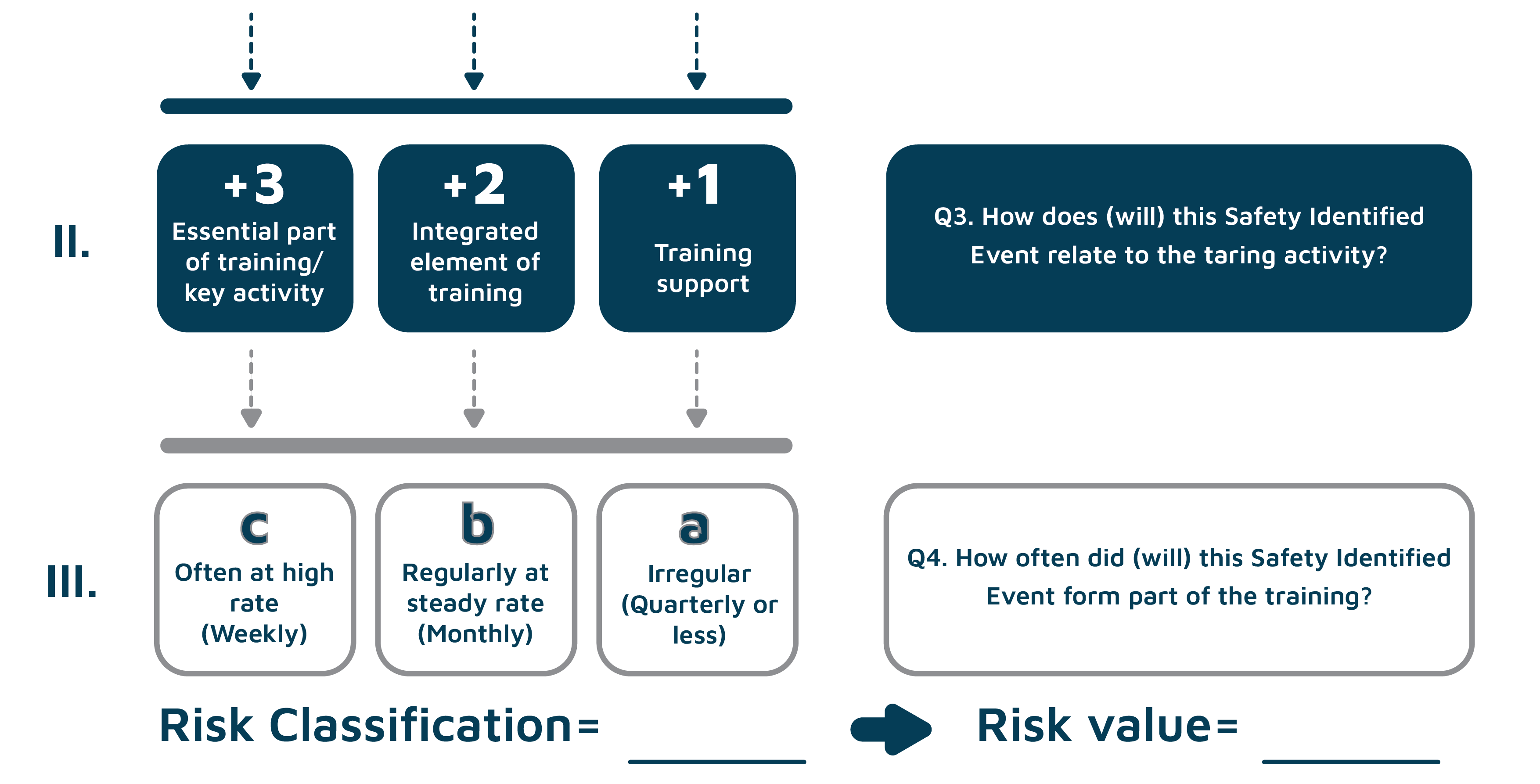Sofema Aviation Services (SAS) www.sassofia.com considers the RAPT process (Risk Assessment Pilot Training) as a process to understand potential exposures related primarily to Flight Training.
Introduction
- Safety risk management is an essential part of an effective safety management system (SMS) and risk matrices are elementary tools for organisations seeking fast, effective and practical risk assessment.
Note – RAPT should not be used in isolation, but rather in conjunction with the rest of the organisations safety management processes.
The Risk Assessment Pilot Training (RAPT Matrix)
The RAPT matrix is intended to be a practical and easy to use tool for Pilot Training Organisations, in order to:
- Promote targeted discussion; the discussion often being as useful as the resulting risk value.
- Help keep participants engaged in a risk workshop on track.
- Provide a degree of consistency to risk prioritisation.
- Decipher and present risk assessment in a concise visual fashion, by use of an alphanumeric risk index and risk value, which facilitates risk acceptance decisions.
- Bring attention to the management and decisions makers on the highest priority risks.
- Create a baseline for risk assessing changes.
RAPT Methodology
The RAPT is a methodology for risk assessment in pilot training.
- TRA – Training Risk Assessment, focuses on pilot training, where risks are based on non-proficient pilots and training deficiencies.
- These risks are also relevant for training organisations that do not operate aircraft and where the causal and contributing factors to an aircraft incident or accident may be separated in terms of organisation, location, and point in time.
Calculation of Risk Classification, Risk Value, and Acceptable Risk Level.
Output of Part I – Initial Risk Index
- Used for determination of the initial urgent actions against colour coding; in cases where an initial risk assessment is done outside of a safety review/risk assessment group, the urgent action is determined by colour coding:
- Red and Amber: An intermediate safety review is needed.
- Green: A standard safety review process can be followed.
- Alphanumerical data used for statistics and trend analysis. Reassessed during safety review, independent of the alphanumerical data in RAPT parts II and III.
Output of Part II and III – Risk Impact Assessment
- Used for risk assessing the impact on training, in terms of applicability and exposure.
- Alphanumerical data used for statistics and trend analysis. Reassessed during safety review, independent of the alphanumerical data in RAPT part I.
Output of Part I, II, and III
- Risk Classification is the combined alphanumerical value of part I/II/III – and the sum of the risk assessment.
- Risk Value is a numerical value calculated from the alphanumerical Risk Classification and used in the risk acceptance process.
- Risk Value is referenced against the Acceptable Risk Level in the process of risk acceptability.
Summary
The first output is an Initial Risk Index, supporting early and timely risk awareness and helping to prioritise actions, which need to be taken.
The second output of the RAPT is a combined alphanumerical number called the Risk Classification.
- This is the sum of the alphanumerical values and shall be used for trend analysis and data grouping of the risk register.
- The third output is the Risk Value; a mathematical conversion of the Risk Classification into a numerical value, used in the further process of risk mitigation and risk acceptance.
o The numerical value is essential in maintaining risk awareness and overview.
o When converting the alphanumerical values the following mathematical rules should be used:
o Alphabetic numbering equals numerical values i.e. a=1, B=2.
o When calculating the Risk Value the following mathematical rules should be used:
-
-
- The two values of part I are multiplied.
- The two values of parts II and III are multiplied.
- The resultant values of a. and b. above are added.
-
Next Steps
Follow this link to our Library to find & Download related documents for Free.
Sofema Aviation Services & Sofema Online provide Consultancy, Classroom, Webinar, and Online Training including the following course: EASA Regulation 1178/2011 Including EASA Part FCL Regulatory Training – 3 Days
For additional details visit our websites www.sassofia.com and www.sofemaonline.com or email team@sassofia.com
Tags:
aviation, EASA, Risk, Risk Assessment, SAS blogs, SAS training, Pilot Training, RAPT, Risk Assessment Pilot Training, Flight Training, RAPT Matrix






